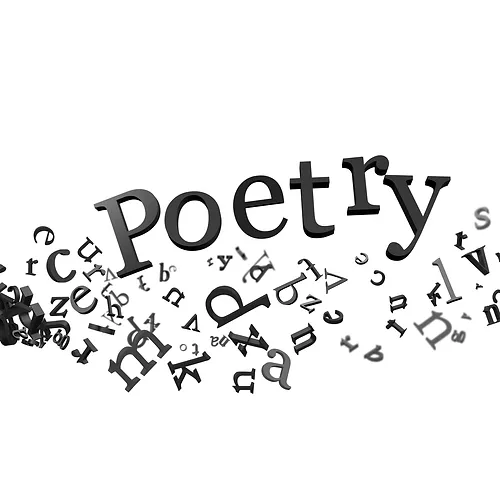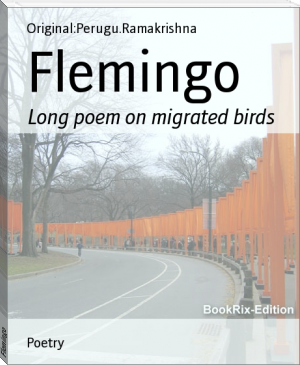A Study of Poetry by Bliss Perry (ereader with android TXT) 📖

- Author: Bliss Perry
- Performer: -
Book online «A Study of Poetry by Bliss Perry (ereader with android TXT) 📖». Author Bliss Perry
Now no one can snap a Kodak effectively without putting into practice the first of these conceptions: nor understand the “new music” and “free verse” without reckoning with both the second and the third. The value to the student of poetry of some acquaintance with aesthetic theory is sometimes direct, as in the really invaluable discussion contained in Aristotle’s Poetics, but more often, perhaps, it will be found in the indirect stimulus to his sympathy and taste. For he must survey the widespread sense of beauty in the ancient world, the splendid periods of artistic creation in the Middle Ages, the growth of a new feeling for landscape and for the richer and deeper human emotions, and the emergence of the sense of the “significant” or individually “characteristic” in the work of art. Finally he may come to lose himself with Kant or Hegel or Coleridge in philosophical theories about the nature of beauty, or to follow the curious analyses of experimental aesthetics in modern laboratories, where the psycho-physical reactions to aesthetic stimuli are cunningly registered and the effects of lines and colors and tones upon the human organism are set forth with mathematical precision. He need not trouble himself overmuch at the outset with definitions of Beauty. The chief thing is to become aware of the long and intimate preoccupation of men with beautiful objects and to remember that any inquiry into the nature and laws of poetry will surely lead him into a deeper curiosity as to the nature and manifestations of aesthetic feeling in general.
2. The Impulse to Artistic Production
Furthermore, no one can ask himself how it is that a poem comes into being unless he also raises the wider question as to the origin and working of the creative impulse in the other arts. It is clear that there is a gulf between the mere sense of beauty—such as is possessed by primitive man, or, in later stages of civilization, by the connoisseur in the fine arts—and the concrete work of art. Thousands enjoy the statue, the symphony, the ode; not one in a thousand can produce these objects. Mere connoisseurship is sterile. “The ability to produce one fine line,” said Edward FitzGerald, “transcends all the Able-Editor ability in this ably-edited universe.” What is the impulse which urges certain persons to create beautiful objects? How is it that they cross the gulf which separates the enjoyer from the producer?
It is easier to ask this question than to find a wholly satisfactory answer to it. Plato’s explanation, in the case of the poet, is simple enough: it is the direct inspiration of the divinity,—the “god” takes possession of the poet. Perhaps this may be true, in a sense, and we shall revert to it later, but first let us look at some of the conditions for the exercise of the creative impulse, as contemporary theorists have endeavored to explain them.
Social relations, surely, afford one of the obvious conditions for the impulse to art. The hand-clapping and thigh-smiting of primitive savages in a state of crowd-excitement, the song-and-dance before admiring spectators, the chorus of primitive ballads,—the crowd repeating and altering the refrains,—the rhythmic song of laboring men and of women at their weaving, sailors’ “chanties,” the celebration of funeral rites, religious processional and pageant, are all expressions of communal feeling, and it is this communal feeling—“the sense of joy in widest commonalty spread”—which has inspired, in Greece and Italy, some of the greatest artistic epochs. It is true that as civilization has proceeded, this communal emotion has often seemed to fade away and leave us in the presence of the individual artist only. We see Keats sitting at his garden table writing the “Ode to Autumn,” the lonely Shelley in the Cascine at Florence composing the “West Wind,” Wordsworth pacing the narrow walk behind Dove Cottage and mumbling verses, Beethoven in his garret writing music. But the creative act thus performed in solitude has a singular potency, after all, for arousing that communal feeling which in the moment of creation the artist seems to escape. What he produces in his loneliness the world does not willingly let die. His work, as far as it becomes known, really unites mankind. It fulfills a social purpose. “Its function is social consolidation.”
Tolstoy made so much of this “transmission of emotion,” this “infectious” quality of art as a means of union among men, that he reduced a good case to an absurdity, for he argued himself into thinking that if a given work of art does not infect the spectator—and preferably the uneducated “peasant” spectator—with emotion, it is therefore not art at all. He overlooked the obvious truth that there are certain types of difficult or intricate beauty—in music, in architecture, and certainly in poetry—which so tax the attention and the analytical and reflective powers of the spectator as to make the inexperienced, uncultured spectator or hearer simply unaware of the presence of beauty. Debussy’s music, Browning’s dramatic monologues, Henry James’s short stories, were not written for Tolstoy’s typical peasant. They would “transmit” to him nothing at all. But although Tolstoy, a man of genius, overstated his case with childlike perversity, he did valuable service in insisting upon emotion as a basis for the art-impulse. The creative instinct is undeniably accompanied by strong feeling, by pleasure in the actual work of production and in the resultant object, and something of this pleasure in the harmonious expression of emotion is shared by the competent observer. The permanent vitality of a work of art does consist in its capacity for stimulating and transmitting pleasure. One has only to think of Gray’s “Elegy” and the delight which it has afforded to generations of men.
Another conception of the artistic impulse seeks to ally it with the “play-instinct.” According to Kant and Schiller there is a free “kingdom of play” between the urgencies of necessity and of duty, and in this sphere of freedom a man’s whole nature has the chance to manifest itself. He is wholly man only when he “plays,” that is, when he is free to create. Herbert Spencer and many subsequent theorists have pointed out the analogy between the play of young animals, the free expression of their surplus energy, their organic delight in the exercise of their muscles, and that “playful” expenditure of a surplus of vitality which seems to characterize the artist. This analogy is curiously suggestive, though it is insufficient to account for all the phenomena concerned in human artistic production.
The play theory, again, suggests that old and clairvoyant perception of the Greeks that the art-impulse deals with aesthetic appearances rather than with realities as such. The artist has to do with the semblance of things; not with things as they “are in themselves” either physically or logically, but with things as they appear to him. The work of the impressionist painter or the imagist poet illustrates this conception. The conventions of the stage are likewise a case in point. Stage settings, conversations, actions, are all affected by the “optique du th��tre” they are composed in a certain “key” which seeks to give a harmonious impression, but which conveys frankly semblance and not reality. The craving for “real” effects upon the stage is anti-aesthetic, like those gladiatorial shows where persons were actually killed. I once saw an unskilful fencer, acting the part of Romeo, really wound Tybalt: the effect was lifelike, beyond question, but it was shocking.
From this doctrine of aesthetic semblance or “appearance” many thinkers have drawn the conclusion that the pleasures afforded by art must in their very nature be disinterested and sharable. Disinterested, because they consist so largely in delighted contemplation merely. Women on the stage, said Coquelin, should afford to the spectator “a theatrical pleasure only, and not the pleasure of a lover.” Compare with this the sprightly egotism of the lyric poet’s
“If she be not so to me,
What care I how fair she be?”
A certain aloofness is often felt to characterize great art: it is perceived in the austerity and reserve of the Psyche of Naples and the Venus of Melos:
“And music pours on mortals
Its beautiful disdain.”
The lower pleasures of the senses of taste and touch, it is often pointed out, are less pleasurable than the other senses when revived by memory. Your dinner is your dinner—your exclusive proprietorship of lower pleasure—in a sense in which the snowy linen and gleaming silver and radiant flowers upon the table are not yours only because they are sharable. If music follows the dinner, though it be your favorite tune, it is nevertheless not yours as what you have eaten is yours. Acute observers like Santayana have denied or minimized this distinction, but the general instinct of men persists in calling the pleasures of color and form and sound “sharable,” because they exist for all who can appreciate them. The individual’s happiness in these pleasures is not lessened, but rather increased, by the coexistent happiness of others in the same object.
There is one other aspect of the artistic impulse which is of peculiar importance to the student of poetry. It is this: the impulse toward artistic creation always works along lines of order. The creative impulse may remain a mystery in its essence, the play of blind instinct, as many philosophers have supposed; a portion of the divine energy which is somehow given to men. All sorts of men, good and bad, cultured and savage, have now and again possessed this vital creative power. They have been able to say with Thomas Lovell Beddoes:
“I have a bit of fiat in my soul,
And can myself create my little world.”
 The unity of form and content is what distinguishes poetry from other areas of creativity. However, this is precisely what titanic work implies.
The unity of form and content is what distinguishes poetry from other areas of creativity. However, this is precisely what titanic work implies. 




Comments (0)